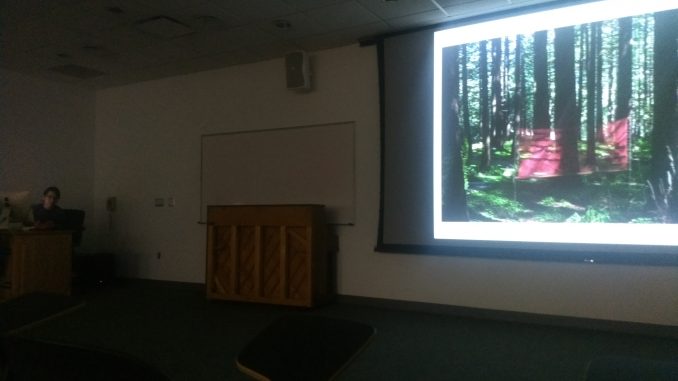
Growing up on a farm on the outskirts of Nagoya, Japan, Nami Yamamoto became fascinated with the plants, animals and landscapes around her.
On Feb. 5, Yamamoto spoke to around 20 students and faculty at the Tyler School of Art and Architecture about how she has channeled that same fascination into her major works and how she uses research to inform her artistic process.
Yamamoto said she became interested in the sciences by casually reading textbooks, especially in biology, throughout high school and college.
At the same time, Yamamoto studied art in Japan, before coming to the United States for graduate school in the 1990s. Although initially trained primarily in painting, Yamamoto mostly uses materials like paper, molded plastic, fibers and found objects in her art.
At the event, she discussed artworks like her “Primordial Soup” series. The series is composed of installations that made use of geometric patterns from “On Growth and Form,” a 1917 book by D’Arcy Thompson, a Scottish biologist and mathematician, to create complex shapes out of foam and plastic.
“[The book] explained how patterns are formed in nature and plants and animals,” she said. “I loved that book and so I started using some of the ideas from it.”
Yamamoto also talked about her “Water Field” installation, made up of gouache on paper, which she said was inspired both by wave motifs in antique Japanese paintings and da Vinci’s drawings depicting moving water.
The event was part of Tyler’s “Critical Dialogues” course and lecture series, which has brought notable artists to the school to give insights about their work and has allowed students to engage with the artists directly since the 1970s.
Princeton Cange, a 2019 sculpture alumnus, said he found the talk interesting and related it to his own work.
“What stood out to me in what seemed to be her process was like abstraction or simplification and flatness, which I thought was really interesting and is something I think a lot about too,” Cange said. “I just really enjoyed her projects aesthetically.”
Kathryn Mecca, a second-year painting student, said she found Yamamoto’s work impressive.
“I do very different work, but I was very interested in the way she researches materials and the amount of time she puts into her research,” Mecca said.
Gerard Brown, chair of Tyler’s art department and the instructor of the Critical Dialogues course, said he hoped the event would help students and faculty inside and outside of Tyler understand “how artists are working.”
“It’s not sitting around waiting for inspiration to strike them but that they’re involved with research, with organizations, with communities in order to produce their work,” Brown said. “Not unlike what happens everywhere else in the university.”
Yamamoto agreed and said she hoped students left with a better understanding of the effort necessary to produce art.
“I hope especially as art students, they understand, you know, it’s not necessarily just how I developed,” Yamamoto said. “It’s how much it takes to get things done.”


Be the first to comment